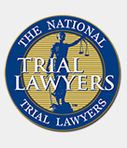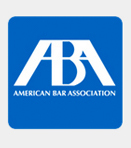
Dealing with broken bones after a car accident is a daunting experience, filled with pain, medical treatments, and a lengthy recovery process. Managing the legal and financial aspects of the accident can add significant stress. A car accident lawyer can handle insurance claims, negotiate settlements, and protect your rights. With their help, you can focus entirely on your healing and recovery without the added burden of legal complexities.
Types of Fractures
Fractures can range from minor cracks to severe breaks. Here are the primary types:
- Simple Fracture — A clean break that does not penetrate the skin.
- Compound Fracture — A break where the bone pierces the skin, increasing the risk of infection.
- Comminuted Fracture — The bone shatters into several pieces.
- Greenstick Fracture — An incomplete fracture where the bone bends (more common in children).
- Transverse Fracture — A horizontal break across the bone.
- Oblique Fracture — An angled break across the bone.
- Spiral Fracture — A fracture caused by a twisting force, leading to a spiral-shaped break.
Most Common Bones Broken in Car Accidents
Car accidents often result in one or more fractures. The most common bones broken in car accidents include:
- Wrist Fractures — Common when drivers instinctively brace themselves against the steering wheel during a crash.
- Rib Fractures — The chest hitting the steering wheel can break ribs, causing severe pain and potential complications such as punctured lungs.
- Collarbone Fractures — The collarbone can break under the force of a collision, particularly with an improperly positioned shoulder belt.
- Femur Fractures — The femur, or thigh bone, is the strongest bone in the body, but a severe impact, like a head-on collision, can cause it to break.
- Hip Fractures — These are especially common in high-impact crashes and can significantly affect mobility.
- Spinal Fractures — Cracks or breaks in the spine can occur after a head-on collision or other serious crash.
Symptoms of a Fracture
Recognizing the symptoms of a fracture is crucial for seeking timely medical treatment. Common signs of a fracture include:
- Intense pain at the site of the fracture
- Swelling around the injured area due to inflammation
- Discoloration of the skin around the fracture
- Difficulty or inability to move the affected limb or body part
- A grinding or cracking sound when moving the injured area
- Increased sensitivity to touch around the fracture site
Common Treatment for Fractures
The fracture treatment depends on the break’s type, location, and severity. Common treatments include:
Immobilization
Immobilization is the first line of treatment for minor fractures. Doctors use casts, splints, or braces to keep the bone in place, preventing movement and allowing it to heal naturally. The duration of immobilization varies depending on the fracture’s location and severity but usually ranges from several weeks to a few months.
Surgery
A severe fracture, such as a compound or comminuted fracture, would require surgery. Surgeons employ internal fixation methods, using metal rods, screws, plates, or wires to hold the bone fragments together. Sometimes, they use external fixation, which involves stabilizing the bone with an external frame.
Medication
Pain management is a critical aspect of the fracture treatment plan. Doctors prescribe analgesics and anti-inflammatory medications to alleviate pain and reduce swelling. Antibiotics are sometimes necessary to prevent or treat infections, especially in compound fractures where the bone pierces the skin.
Reduction
Reduction realigns the bone fragments to their original positions. Doctors can perform this through closed reduction, a non-surgical procedure in which the doctor manipulates the bone externally, or open reduction, which involves surgical intervention to align the bone fragments directly.
Physical Therapy
Once the bone starts to heal, physical therapy becomes essential. Therapists design exercises tailored to restore movement, strength, and function in the affected area. Physical therapy not only aids in recovery but also helps prevent stiffness and maintain muscle tone.
Rest and Recovery
Adequate rest is crucial for the healing process. Doctors often advise patients to limit their activities and use medical aids such as crutches or slings to support the injured area. Following the doctor’s recommendations for rest and recovery ensures proper healing and reduces the risk of complications.
Average Settlement for Broken Bones in Car Accidents
Settlements vary based on the severity of the injury, medical expenses, and impact on the victim’s life. Factors influencing the settlement amount include:
- Medical Costs — Current and projected treatment expenses, such as surgery, hospitalization, specialists, and rehabilitation
- Lost Wages —- Compensation for missed work due to injury, doctor’s appointments, and related matters
- Pain and Suffering — Non-economic damages for physical pain and emotional distress
- Permanent Disability — Additional compensation if the injury results in long-term impairment
Determining Settlement Amounts
The settlement amount for a broken bone injury in a car accident can vary widely. The key factors influencing the settlement include:
- Nature of the Fracture — Compound or comminuted fractures might receive higher settlements than simple fractures due to their complexity and severity.
- Recovery Time — Longer recovery times, which may involve surgery and extensive physical therapy, can increase the settlement amount.
- Impact on Daily Life — Injuries that significantly impact the victim’s daily life and ability to work may result in higher settlements.
How a Car Accident Attorney Can Help

Experiencing different types of broken bones after a car accident is overwhelming, but enlisting the help of a car accident lawyer can make the recovery process much smoother. Here’s how they can assist you:
- Gather Evidence — Collect necessary evidence, such as police reports and medical records, to strengthen your case.
- Identify Liable Parties — Determine who is responsible for your pain and bills.
- Negotiate with insurers — Handles all communication and negotiations with the insurance company to seek maximum compensation.
- Protect Your Rights — Advocate for your best interests and protect your legal rights throughout the process.
- Reduce Stress — Allow you to focus on your recovery while they manage the legal details.
Get a Free Consultation from a Florida Car Accident Attorney
Your priority after a car accident is your health. Broken bones and fractures require time and medical assistance to make the best possible recovery, and working with a Florida car accident lawyer allows you to focus on rest and rehabilitation. At The Bruner Law Firm, our experienced lawyers have the legal knowledge and proven track record and are eager to demand the money you need for your recovery. Let us help you. Call us today at (850) 243-2222 or contact us online for your free, no-obligation consultation.
Related Posts:
Bicycle Accident Claims & Helmet Laws in Florida







